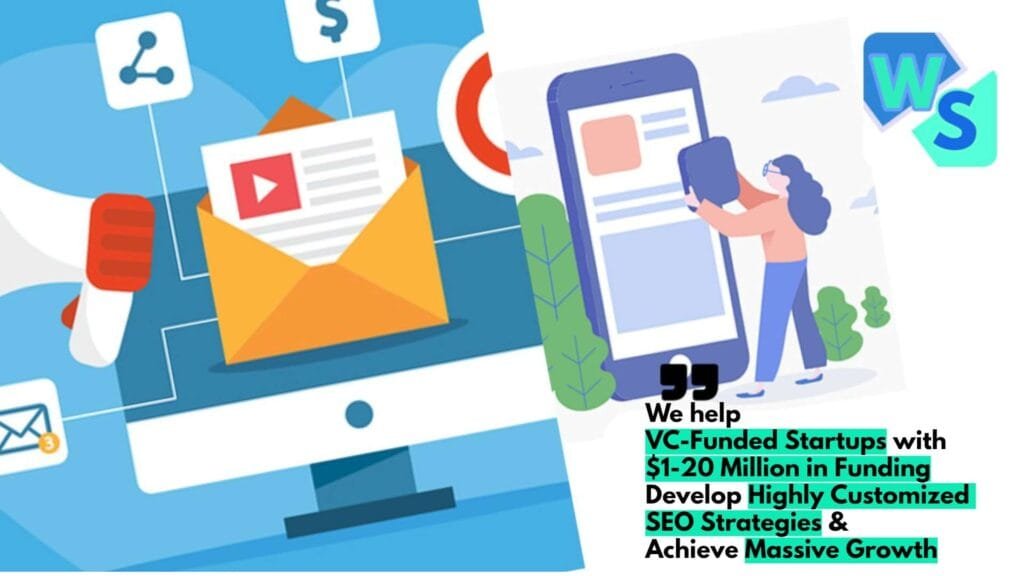Social media has revolutionized how businesses reach and engage with their customers. It has emerged as a powerful platform for marketing, enabling brands to tap into a vast audience spread across the globe.
With its ubiquitous presence and transformative potential, social media is no longer a luxury but a necessity for businesses seeking to thrive in today’s digital age.

Creating a comprehensive social media marketing plan is crucial to harnessing this power effectively. A well-crafted plan provides a roadmap for your brand’s journey on social media. It guides your actions, helps you track progress, and ensures that every post aligns with your broader business objectives.
This guide will walk you through the process of creating a robust social media marketing plan. We will explore the importance of such a plan, delve into key elements like audience identification, goal setting, and performance tracking, and provide you with a step-by-step approach to putting it all together.
By the end, you will have a clear understanding of how to navigate the exciting yet often daunting world of social media marketing.
Importance of a Solid Social Media Marketing Plan
In the digital era, it’s not enough to be present on social media platforms; you must also have a well-thought-out strategy to leverage them effectively.
A solid social media marketing plan is akin to a GPS for your brand in the vast, ever-changing social media landscape. It provides direction and focus, helping you navigate through the noise and connect with your target audience.
A comprehensive plan articulates your social media goals, identifies the right platforms for your brand, and outlines the kind of content that will resonate with your audience. It spells out a posting schedule, encourages audience engagement, and includes metrics for tracking performance.
With a well-designed plan, you can use social media not just for broadcasting messages, but for building relationships, driving customer loyalty, and fostering brand advocacy.
In a world where consumers are inundated with content, a carefully crafted social media marketing plan can help your brand’s voice stand out. It can transform your social media presence from a random collection of posts into a strategic, coordinated effort that drives business growth.
Understanding Social Media Marketing
The Role and Importance of Social Media in Marketing
Social media has fundamentally reshaped the marketing landscape. It has given brands the ability to directly interact with their customers, foster relationships, and build strong online communities.
Social media marketing is the use of social platforms to promote a product or a service. It involves creating tailored content for each social media platform to engage your audience and promote your brand. It also involves analyzing your results and making adjustments to improve performance.
Social media platforms are an integral part of your marketing strategy because they allow you to connect directly with your audience. You can use them to get customer feedback, provide customer service, and create a community around your brand.
Furthermore, they allow you to reach a larger audience at a lower cost than traditional marketing channels.
The power of social media marketing extends beyond mere ‘likes’ and ‘shares’. It can help generate leads, boost sales, increase website traffic, improve search ranking, enhance customer service, build brand loyalty, and much more.
By not leveraging social media, businesses risk losing relevance, visibility, and connections with their audience.
Major Social Media Platforms and Their Relevance to Businesses
Different social media platforms cater to different demographics and offer unique ways to interact with users. Here’s a brief overview of the major platforms and their relevance to businesses:
- Facebook: With over 2.8 billion monthly active users, Facebook is an excellent platform for reaching a wide demographic. It’s particularly effective for sharing company news, blog posts, and engaging multimedia content.
- Instagram: Instagram is a visually-oriented platform that’s popular with millennials and Gen Z. It’s great for sharing high-quality photos, short videos, and stories to engage users and showcase your products or services in action.
- LinkedIn: LinkedIn is the go-to platform for B2B marketing. It’s a professional network where you can share industry news, thought leadership content, and career opportunities.
- Twitter: Twitter is ideal for sharing short updates, linking to interesting content, and engaging with customers. It’s also a great platform for monitoring trends and understanding what matters to your audience.
- Pinterest: Pinterest is perfect for businesses selling physical products that can be showcased through high-quality images or infographics. It’s popular among DIYers, creatives, and planners.
- YouTube: As the second largest search engine, YouTube is perfect for sharing video content such as tutorials, product demonstrations, and behind-the-scenes looks at your business.
- TikTok: TikTok, with its short-form video content, is currently popular with Gen Z. Brands can use it for challenges, unfiltered looks at the business, and viral content.
Understanding the nuances of each platform helps you select the right ones for your business and tailor your content accordingly.
Benefits of a Robust Social Media Marketing Plan
Investing in a well-structured social media marketing plan can pay dividends in more ways than one. Here are some benefits that highlight the potential impact of a robust social media strategy:

Increased Brand Awareness and Loyalty
A significant benefit of social media marketing is the potential for increasing brand awareness. By regularly posting relevant content on various platforms, you’re providing value to your audience while keeping your brand top-of-mind. Over time, this consistent exposure can lead to increased recognition and loyalty. According to a study by Texas Tech University, brands who engage with their audience on social media channels enjoy higher loyalty from their customers.
Cost-Effective Advertising
Compared to traditional marketing channels, social media advertising can be a cost-effective way to reach a large audience. You can start by spending a small amount of money to test and adjust your campaigns to maximize your ROI.
Improved Customer Insights and Targeting
Social media provides a wealth of data about your audience’s interests, opinions, and behaviors. These insights can help you tailor your products, marketing campaigns, and customer service to better meet their needs. Additionally, social media platforms’ advertising tools allow you to target ads to users based on demographics, interests, behaviors, and more, ensuring your message reaches the most relevant audience.
Enhanced Customer Service and Satisfaction
Social media platforms offer an easy way for customers to express their feedback, questions, or concerns. Quick, responsive customer service via these platforms can enhance customer satisfaction and public perception of your brand.
Increased Website Traffic
Social media channels are excellent tools to direct traffic to your website. Sharing great content from your blog or website to your social media channels is a great way to get readers as soon as you publish a new post.
Competitive Analysis
With social media, you can gain key information about your competitors. This kind of analysis will allow you to make strategic business decisions to stay ahead of them.
Key Elements of a Social Media Marketing Plan
Having a clear understanding of the key elements that form the basis of a social media marketing plan is crucial. Let’s look at these components more closely.
Identifying Your Audience
Importance of Audience Identification
Before starting any marketing efforts, it’s essential to know who your audience is. In the realm of social media, this means understanding who is most likely to engage with your brand and on which platforms. By having a clear understanding of your audience, you can create more targeted, relevant content that resonates with them, ultimately leading to higher engagement rates.
Strategies and Tools for Effective Audience Identification
Identifying your audience involves a mixture of market research, data analysis, and buyer persona creation. Social media analytics tools can provide demographic data about your followers, including their age, location, and interests.
Additionally, surveys and direct audience feedback can also provide valuable insights. Once you’ve gathered this data, you can create detailed buyer personas that represent your typical followers. These personas can then guide your content creation and marketing efforts.
Setting Social Media Goals
Importance of Setting Clear and Measurable Goals
Setting clear, measurable goals for your social media efforts is crucial to determine your strategy’s success. These goals provide direction for your plan and a benchmark to measure your progress. Without goals, you lack a clear focus, and it’s difficult to determine whether your efforts are successful.
Examples of Common Social Media Goals
Social media goals should align with your overall business objectives. Common goals might include increasing brand awareness, driving traffic to your website, generating new leads, increasing product sales, or improving customer service. Each goal should be specific, measurable, achievable, relevant, and time-bound (SMART).
Selecting the Right Platforms
Choosing the right social media platform for your business is critical. It’s not about being present everywhere; it’s about being present where your audience is. Each platform has a unique demographic profile, interaction style, and content preference, which directly affects how well your marketing message will resonate.
How to Choose the Right Platforms for Your Business
Understanding the platforms and aligning them with your business needs and goals can lead to a successful social media marketing strategy.
Understand Your Audience
Your audience’s preferences should dictate your social media platform choices. To understand your audience better, create buyer personas representing your ideal customers. These personas should include demographic information, interests, and online behavior.
Conduct Surveys
Conducting surveys can help to gather insights about your customers’ social media usage. Ask questions about which platforms they use, their favorite types of content, and their social media habits.
Analyze Existing Social Data
Look at the data from your existing social media platforms. Tools like Google Analytics and native social media analytics tools can provide insights into your audience’s demographics and behavior.
Understand Each Platform
Each social media platform has unique characteristics that cater to specific audience types and content formats.
Facebook is one of the most diverse platforms, with a broad user base. It is excellent for promoting blog posts, hosting live chats, and customer service.
Instagram is a visually-driven platform favored by younger audiences. It is perfect for sharing high-quality images and short videos of your products or behind-the-scenes glimpses of your brand.
LinkedIn caters to professionals and is ideal for B2B companies. It’s a great platform for sharing industry insights, professional content, and company news.
Twitter is the go-to platform for real-time conversations and updates. It’s excellent for sharing quick updates, linking to articles, and engaging with customers.
TikTok
TikTok is a rapidly growing platform popular among Generation Z. It’s a place for creative, fun, and viral video content.
Consider Your Content
The kind of content you plan to create will also dictate the right platforms for your business.
Visual Content
If your business lends itself to strong visuals, platforms like Instagram and Pinterest may be beneficial.
Video Content
If you want to focus on video content, consider YouTube or TikTok. For shorter videos, Instagram Reels and Stories can be a good fit.
Professional Content
If your content is more professional, such as industry insights, whitepapers, or thought leadership articles, then LinkedIn is an excellent platform.
Real-time Updates
For real-time updates and quick engagement, consider Twitter.
By identifying where your audience is, understanding the nuances of each platform, and aligning them with your content strategy, you can select the right social media platforms for your business. This alignment is critical for your business to create a meaningful and engaging presence on social media.
Creating Engaging Content

Importance of Content in Social Media Marketing
Content is the cornerstone of social media marketing. It’s what draws people to your brand, keeps them engaged, and encourages them to share your message with others. Without compelling content, all other elements of your social media plan will struggle to succeed.
Strategies for Creating Engaging and Shareable Content
Creating engaging content starts with understanding your audience and what they find valuable. From educational infographics to entertaining videos, the content should align with your brand and audience interests.
Varying your content types and maintaining a consistent brand voice can also help keep your audience engaged. Finally, encourage interaction by creating opportunities for your audience to engage with your content, like asking questions or sharing user-generated content.
Establishing a Posting Schedule
Importance of Consistency in Social Media
Consistency is key to staying relevant on social media. Regular posting helps maintain engagement and reach on your social media accounts. If you only post sporadically, you risk being forgotten by your audience and not being seen at all due to social media algorithms favoring active accounts.
Tools and Strategies for Scheduling Posts
Planning your posts in advance and using scheduling tools can help ensure consistent posting. This doesn’t mean you can’t also post spontaneously, but having a schedule forms the backbone of your strategy.
Many social media management tools provide scheduling features, and each social media platform usually has peak times for engagement, which are important to identify and take advantage of.
Engaging with Your Audience
Importance of Engagement in Social Media
Social media is not just about broadcasting your messages. It’s a two-way street. Engaging with your audience through comments, messages, and shares can build strong relationships and loyalty, boost your brand’s visibility, and provide valuable insights into your audience’s preferences and behaviors.
Techniques for Boosting Audience Interaction and Engagement
There are several strategies to boost audience engagement. These include posting content that invites interaction, like polls or questions, responding promptly to comments and messages, and creating community around your brand through groups or forums.
User-generated content and contests can also incentivize your audience to interact with your brand.
Tracking and Analyzing Performance
Explanation of Key Social Media Metrics
Understanding how to measure your social media efforts is critical. Key metrics vary by platform but often include reach (how many people saw your post), engagement (how many people liked, shared, commented on, or clicked your post), and conversion (how many people took a desired action, like visiting your website or purchasing your product).
Tools for Tracking and Analyzing Performance
There are numerous tools to help track and analyze social media performance. In-platform insights such as Facebook Insights or Instagram Insights provide valuable data on your audience and post performance. Third-party tools like Hootsuite, Buffer, or Sprout Social can consolidate data from multiple platforms and provide more in-depth analytics.
Creating a Social Media Marketing Plan: Step by Step
Creating a social media marketing plan requires careful consideration of your goals, audience, and resources. This guide will provide you a step-by-step process to create a comprehensive, actionable social media marketing plan.
Step 1. Define Your Goals and Objectives
Before diving into tactics, you need to establish what you hope to achieve with your social media marketing. Clear goals will guide your strategy and help measure your progress.

Setting SMART Goals
Your objectives should be Specific, Measurable, Achievable, Relevant, and Time-bound (SMART). Each goal should relate back to a larger business objective. For example, you might aim to increase brand awareness, drive sales, or improve customer service.
Step 2. Identify Your Target Audience
Understanding your audience is crucial to developing a successful social media marketing plan.
Creating Audience Personas
Create personas that represent your key customer segments. Include details about their demographics, interests, online behaviors, and pain points. This will guide your content creation and platform choices.
Step 3. Select Your Social Media Platforms
Not all social media platforms are suitable for every business. Choose the ones that best align with your target audience and objectives.
Evaluating Social Media Platforms
Analyze each platform’s user demographics and key features to determine its suitability. For example, if your target audience is younger, platforms like Instagram or TikTok may be more effective than LinkedIn.
Step 4. Create and Share Valuable Content
Content is the heart of social media marketing. Your content should inform, entertain, and engage your audience, leading them to associate positive experiences with your brand.
Developing a Content Strategy
Your content strategy should include a mix of promotional and non-promotional content. Create a content calendar that outlines when and what you’ll post on each platform. Don’t forget to optimize your content for each platform.
Step 5. Engage with Your Audience
Social media is all about conversation and community. Make sure to engage with your audience regularly.
Building Engagement
Reply to comments, answer questions, and like or share user-generated content. Hosting live Q&As, webinars, or contests can also help increase engagement.
Step 6. Measure and Adjust Your Strategy
Monitoring your social media performance is crucial to understanding what’s working and what’s not.
Analyzing Social Media Performance
Use the analytics provided by each platform to track your performance against your goals. Adjust your strategy as needed based on your analysis.
A social media marketing plan is not a set-it-and-forget-it tool. It requires constant review and adjustment to stay effective. However, with these steps, you’ll be well on your way to creating a robust and successful social media marketing plan.
Advanced Social Media Strategies
Once you’ve established your social media plan, you can consider adopting advanced strategies to reach a larger audience or deepen your engagement with your existing followers.
Influencer marketing involves collaborating with influential individuals in your industry to expand your reach. These individuals have already built an audience that trusts them, and their endorsement can significantly boost your brand’s visibility.
Social media ads can help you reach a wider audience beyond your followers. Platforms like Facebook, Instagram, and LinkedIn offer targeted advertising options where you can reach specific demographics or individuals who have already interacted with your brand.
Live streaming is another advanced strategy that has gained popularity. It allows you to engage with your audience in real-time, which can make them feel more connected to your brand.
User-generated content (UGC) is a great way to involve your audience in your brand’s story. This involves encouraging your followers to share their own experiences or creations related to your brand, which can generate authenticity and enhance trust.
Social Media Marketing Templates and Tools
Effective social media marketing requires consistent, well-planned efforts, and luckily, there are numerous templates and tools to assist in these efforts. These resources not only streamline your workflow but also help you maintain a cohesive, professional presence across all social media platforms.
Social Media Marketing Templates
Templates provide a structure to organize your thoughts, strategies, and plans. They are particularly useful for businesses just starting with social media or those looking to overhaul their current strategies.
Social Media Strategy Template
A social media strategy template can guide your overall social media marketing approach. It includes sections for defining your goals, target audience, content themes, posting schedule, and key performance indicators (KPIs). An excellent resource to start with is Hootsuite’s free Social Media Strategy Template.
Social Media Calendar Template
A social media calendar template helps plan and schedule your posts ahead of time. It aids in maintaining a consistent posting schedule, crucial for audience engagement. CoSchedule’s Social Media Content Calendar is an interactive tool that allows for comprehensive planning.
Social Media Audit Template
A social media audit template is vital for assessing your current social media performance and identifying areas for improvement. It typically includes sections for listing your social media profiles, tracking follower counts, engagement rates, and more. Hootsuite’s Social Media Audit Template is a comprehensive tool that covers all essential metrics.
Social Media Marketing Tools
Tools designed for social media marketing can significantly improve efficiency, allowing more time for content creation and interaction with followers.
Management Tools
Social media management tools like Buffer, Hootsuite, and Sprout Social allow you to manage multiple social media accounts from one dashboard. They offer features for scheduling posts, monitoring mentions, tracking analytics, and more.
Analytics Tools
Understanding how your social media efforts are performing is crucial. Analytics tools such as Google Analytics, Facebook Insights, and Twitter Analytics provide valuable data about your audience, post reach, engagement, and other vital metrics.
Content Creation Tools
High-quality visuals are key to social media engagement. Tools like Canva, Adobe Spark, and Piktochart provide easy-to-use interfaces for creating beautiful graphics, infographics, and animations.
Influencer Marketing Tools
Platforms like BuzzSumo and Traackr can help you find and connect with influencers in your industry. These tools offer insights into the influencer’s audience, engagement, and more, helping you make informed decisions.
Social Listening Tools
Social listening tools like Mention and Brandwatch allow you to track what people are saying about your brand, competitors, or industry across social media. They help you respond to brand mentions promptly and identify trends in your audience’s discussions.
Social media marketing templates and tools are invaluable resources for any business looking to enhance its online presence. By leveraging these tools, you can streamline your processes, measure your results more effectively, and ultimately, improve your social media marketing efforts.
Wrapping Up
As we reach the conclusion of our comprehensive guide, it’s crucial to remember that an effective social media marketing plan is not static but dynamic.
It requires consistent monitoring, analyzing, and adjusting based on your performance metrics and changing market trends. There’s no one-size-fits-all strategy, as what works for one business may not work for another.
With the advancement of technology, the world of social media continues to evolve. Keeping up with the latest trends, platforms, and features can give you a competitive edge. As we discussed, consider exploring advanced strategies like influencer marketing, social media ads, live streaming, and user-generated content.
There’s an array of tools and templates out there that can make the process more efficient. Choose what fits your business needs and budget. Learning from successful brands can also provide insights and inspiration for your social media marketing journey.
With this, we have now covered the entire journey of creating an effective social media marketing plan. It’s now your turn to put these strategies into action and transform your social media game.
Thank you for joining us on this comprehensive journey to creating a robust social media marketing plan. Here’s to your success on the social media frontier!
Read Next:
- How to Use Heatmaps and Click Tracking for CRO
- How to Create an Inbound Conversion Funnel: A Deep Dive
- Essentials to Look Out for Before Applying for a Patent in the US
- Proof of Concept: What it Is and How to Create One
- MVP: What it Is and How to Create One
- How to use Surveys and Feedback for CRO
- 21+ Ways Chatbots can Skyrocket Lead Generation and Conversions





















